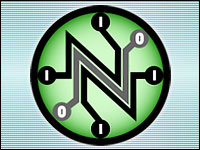
At least 18 million Americans have no access to broadband Internet connectivity, and the chairman of the Federal Communications Commission wants to do something about that. Julius Genachowski sketched out a proposal at the FCC offices Thursday that would shift subsidies from telecom services in rural areas to broadband Internet access.
The FCC has US$8 billion in subsidies that it puts toward landline telephony services in mostly rural areas. Genachowski wants to use some of those funds for broadband. He called the current system under the Universal Service Fund (USF) outdated, given the importance of Internet connectivity.
“Broadband has gone from being a luxury to a necessity for full participation in our economy and society,” Genachowski said.
Broadband for Everyone
Genachowski is seeking to increase the percentage of people who use high-speed Internet at home from the current 65 percent to 90 percent.
“The immediate prospects for deployment to them are now bleak,” he noted. “The cost of the broadband gap is measured in jobs not created, existing job openings not filled, and our nation’s competitiveness not advanced.”
Indeed, the United States lags behind most developed counties — and many undeveloped countries — in the percentage of population with access to high-speed Internet connectivity.
The USF supports phone service to schools, libraries, the poor, and high-cost areas in the form of subsidies to vendors. It is financed by charges on long-distance calls paid by telephone subscribers. Those fees currently subsidize companies that take services into expensive rural areas, such as Windstream and Frontier.
Genachowski wants to transform the USF into a “Connect America Fund” designed to ensure affordable high-speed Internet service in regions that lack access and to promote mobile broadband nationwide.
His proposals for redeploying USF funds from telephony to broadband Internet connectivity will be brought before the agency’s four commissioners at an Oct. 27 FCC meeting.
The FCC did not respond to the E-Commerce Times’ request for comments by press time.
Third-World Status
Increasing broadband connectivity could increase the overall economic strength of e-commerce and bring new economic opportunities to rural America.
“Genachowski’s ideas make a lot of sense,” Rob Enderle, principal analyst at the Enderle Group, told the E-Commerce Times. “The FCC really wants to connect people to the Internet and provide broadband. They are going to take the digital homeless and try to get them homes.”
This is a global competitive issue — the United States is lagging in high-speed access, Enderle pointed out.
“We’re certainly behind Asia on connectivity,” he said. “We are way behind countries like Korea and Singapore. Taking subsidies and applying them to broadband connectivity could bring us out of third-world status.”
Can the Gov Do It Efficiently?
Is improving Internet connectivity a job for the government? If substantial dollars are committed to the effort, there will certainly be a greater number of rural residents with high-speed Internet. Yet there are questions about whether the government can apply those dollars efficiently.
“I’m a bit of acynicon this topic,” said Jim McGregor, chief technology strategist at In-Stat.
“Let’s face it — this is basically a tax that is generating a huge pool ofmoneythat everyone and their grandmother is going to fight over,” he told the E-Commerce Times. “History shows us that the government is ineffective in using money for its intended purposes.”
If billions are allocated for broadband development in rural areas, the USF may become a mighty rich trough for broadband vendors.
“I have no doubt that this will lead to many fights in Washington, D.C., and within the telecommunications industry,” said McGregor. “In the end, I think it will do little to bring high-speed Internet to all rural areas.”






















































Social Media
See all Social Media